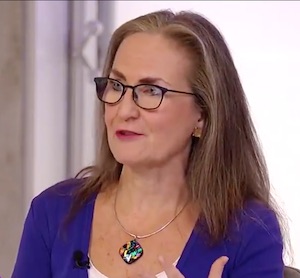The early days of COVID-19 saw employees camped at home, using kitchen tables, beds, sofas and whatever else they could use as makeshift workstations. The compounding stress of prolonged sub-optimal work conditions in a residential environment is taking a significant toll on the workforce’s physical health and mental wellbeing.
Unless organizations intervene to address this situation, the problem is likely going to snowball into a very expensive oversight.
buy cipro online https://royalcitydrugs.com/cipro.html no prescription
Ergonomics aims to increase efficiency and productivity, and reduce discomfort. If left uncorrected, however, an un-ergonomic desk-chair-monitor-keyboard combination can lead to numerous manifestations of so-called “sitting disease,” such as repetitive strain injuries (RSIs), fatigue, vision complications, metabolic syndrome (weight gain and diabetes), circulatory issues in the legs, and musculoskeletal disorders (MSD) like chronic back, neck and shoulder pains.
The appalling work-from-home conditions for millions of employees in the United States may also soon be a nightmare for HR when it faces massive payouts for occupational injuries and MSD complications. The productivity losses that will ensue may also impact organizational performance as a whole.
Minimizing Workstation-Related Health Risks During Quarantine
Here is a snapshot of typical company costs for treatment of MSD-related complaints, in terms of direct and indirect workers’ compensation. In some regions, the average claim amounts for these kinds of injuries can be two to four times larger. Multiply these numbers by the number of potentially affected employees, and the math begins to look pretty grim:
• Wrist/Carpal tunnel injury: $7,600 average cost
• Tennis Elbow: $9,100 average cost
• Shoulder/Rotator Cuff injury: $14,800 average cost
• Neck injury: $21,000 average cost
To address these issues, employers can improve work conditions at home by offering ergonomic solutions. Ergonomic workstation equipment, such as sit-to-stand desks and proper standing mats, monitor arms, keyboard trays, active chairs and other flexible accessories help mitigate the most common health risks associated with desk jobs, such as back and neck pain, eye strain, wrist and carpal tunnel injury, and sitting disease. Here is a breakdown of the most common injuries and the office equipment that may address each:
Back and Neck Pain is caused by a lack of movement while holding the body in a fixed (often awkward) position, forcing discs to bulge and exert pressure on the spinal nerve. One solution is ergonomic sit-stand desks and desk converters, which allow employees to work while standing. This stretches out the spine, relieving pressures that accumulate in the back and neck areas.
More time spent standing also reduces risks of heart disease and high blood sugar while boosting the body’s metabolic rate for weight loss, increased energy and improved mood.
Eye Strain is caused by having a computer monitor placed too close or too far away from the face, making the eyes work harder to focus or forcing the body to lean forward and strain the neck and eyes. One solution is an ergonomic monitor arm, which allows the user to move the screen forward or back and up and down to keep the center of the screen comfortably located between 15 and 20 degrees below horizontal eye level.
Wrist and Carpal Tunnel Injury is caused by long hours of keyboard use, resulting in painful fluid build-up, pressure on the median nerve, as well as awkward positioning of the hand and wrist while typing. A vertical mouse, which places the hand in an upright position, or an ergronomic keyboard tray can prevent this injury.
Sitting Disease and physical inactivity can lead to health consequences such as obesity, increased blood pressure, high blood sugar, accumulation of belly fat and abnormal cholesterol levels. Switching from sitting to standing to walking throughout the day is the most prudent regimen. Using a treadmill desk can help mitigate the debilitating consequences of sitting disease while potentially giving the body more oxygen, increased focus and enhanced mental acuity.
The human body was not designed to sit for many hours at a time doing repetitive work. Before the industrial revolution, people spent only three hours per day sitting. COVID-19 has effectively made an already known health risk many times worse by restricting employees indoors and forcing them to work off beds, sofas and kitchen tables.
The onus is now on employers to get proactive about employee health and productivity while lowering healthcare costs.

